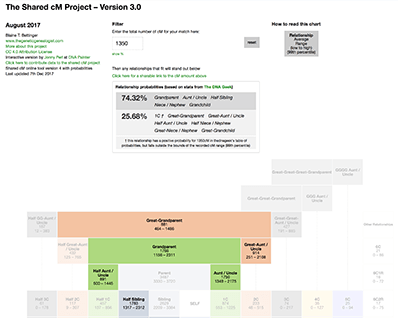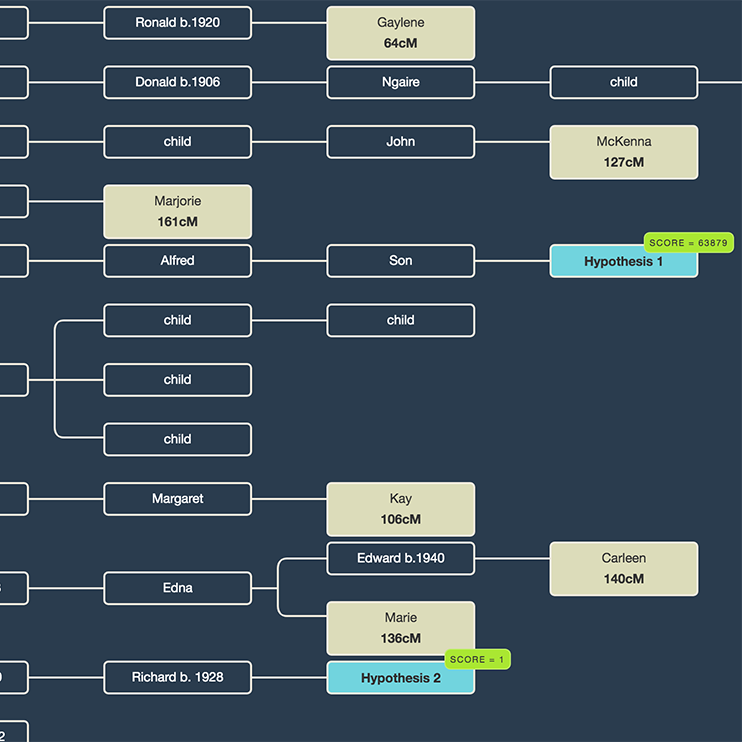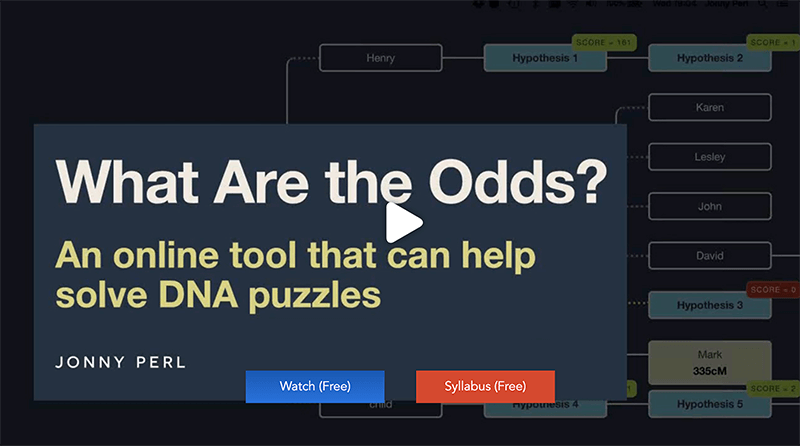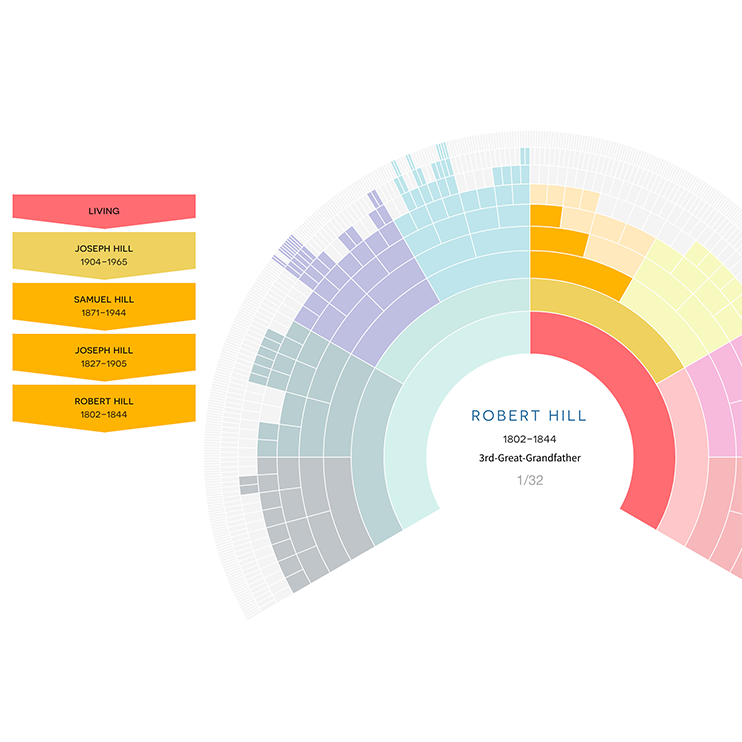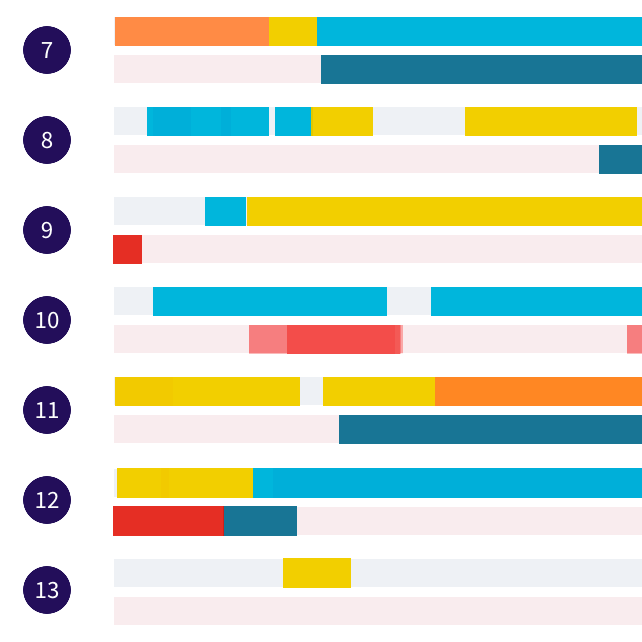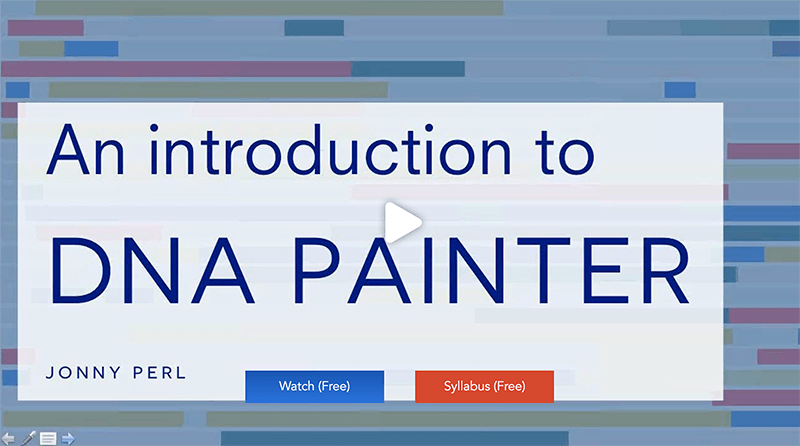DNA Painter is a website for genealogists and family history enthusiasts who have taken an autosomal DNA test.
Interpreting test results can be a challenge. DNA Painter helps by providing a platform where you can:
- Take stock of what you already know about your family line by building or importing a tree.
- Use the amount of DNA you share with matches (measured in centiMorgans) to look at how you might be related to them with interactive tools
- Try chromosome mapping to visualize the actual segments of DNA you share with matches to deduce which parts of your DNA you inherited from specific ancestors in your tree.
DNA Painter is not affiliated with or endorsed by any DNA testing company.
Please note: you do not upload your raw DNA to DNA Painter.
Choose the right tool for the job
You may have a specific aim or genealogical problem to solve. To help guide you to the appropriate tool or method, here are some examples of how DNA Painter can be used:
Figure out how you’re related to a match
If you share DNA with a match, you will want to make use of all the information you have in order to identify them.
- At a minimum, this will include the number of centimorgans (cM) that you share with the match, which you can enter into the shared cM project tool.
- The tool will hide all matches that are *not* possible for this amount of shared DNA, and will provide probabilities for all possible relationships.
- In conjunction with other clues (e.g. the match's age, location, and the 'in common with' or shared matches on the testing site) you can then start to refine the possibilities.
Identify an unknown parent or ancestor
To track down the identity of an unknown parent or ancestor, you'll want to examine not just one match, but several. In order to do this, you'll first want to narrow down which matches are likely to be related to you via the unknown parent or ancestor. A popular way to do this is via the Leeds Method.
Having done this, you will then need to undertake genealogical research to try to tie interrelated DNA matches together in a family tree. You'll then know how these matches relate to one another, and how much DNA you share with them, but not where you fit into the tree.
At this point, you can try the What are the odds? (WATO) plus tool. This tool allows you to place yourself in different positions in the tree, and will show you which places are most likely based on the DNA you share with the matches. It will also show which positions are not feasible. A user guide for WATO plus is available here.
There's a free webinar available on the original version of WATO at Legacy Family Webinars.
Visualize your tree in a fan chart and understand DNA inheritance paths
The site allows you to build a tree of your direct ancestors and colour code (either based on your own specific needs, or using a preset palette). You can build this via a simple web interface, or import it from a GEDCOM file.
The trees feature allows you to search your tree by name or place, view tree completeness at each generation, and overlay inheritance paths for X-DNA, Y-DNA, and mitochondrial DNA. You can also optionally share your tree via a dedicated link, with options to hide living people.
Track the DNA you share with matches and map segments to ancestors
The site was originally built for chromosome mapping with the strapline 'Map DNA Segments to your ancestors'. For more on this topic please read the introductory blog post Why map your chromosomes?
Here's an example of the data you start with:
Segment data for a DNA match looks like this:
| Chr | Start Location | End Location | Centimorgans (cM) | SNPs |
| 9 | 116,379,698 | 140,131,592 | 43.8 | 4,397 |
After you paste it into DNA Painter, you'll see this data mapped onto your chromosomes like this:

This process is known as chromosome mapping.
Please note: your testing company provides your raw DNA data in a large single zipped text file. This is completely different from the segment data for a DNA match mentioned above. You do not upload your raw DNA to DNA Painter; the only data you need is the segment data for the DNA you share with a match!
There's a free webinar available on chromosome mapping with DNA Painter at Legacy Family Webinars.
There are also specialist standalone tools available on the main tools page.
If at this point you're confused, don't worry! Read on, and if you're still somewhat overwhelmed, it might be worth reading a gentle introduction on what you can do with your results. This is a good one: DNA – What, when, how, why – FAQs for beginners by Donna Rutherford.
Please read on through this section for more practical and background information, including an FAQ and glossary. If you're interested seeing how the site works in a video, please visit this page.
Next: What do you need to get started?